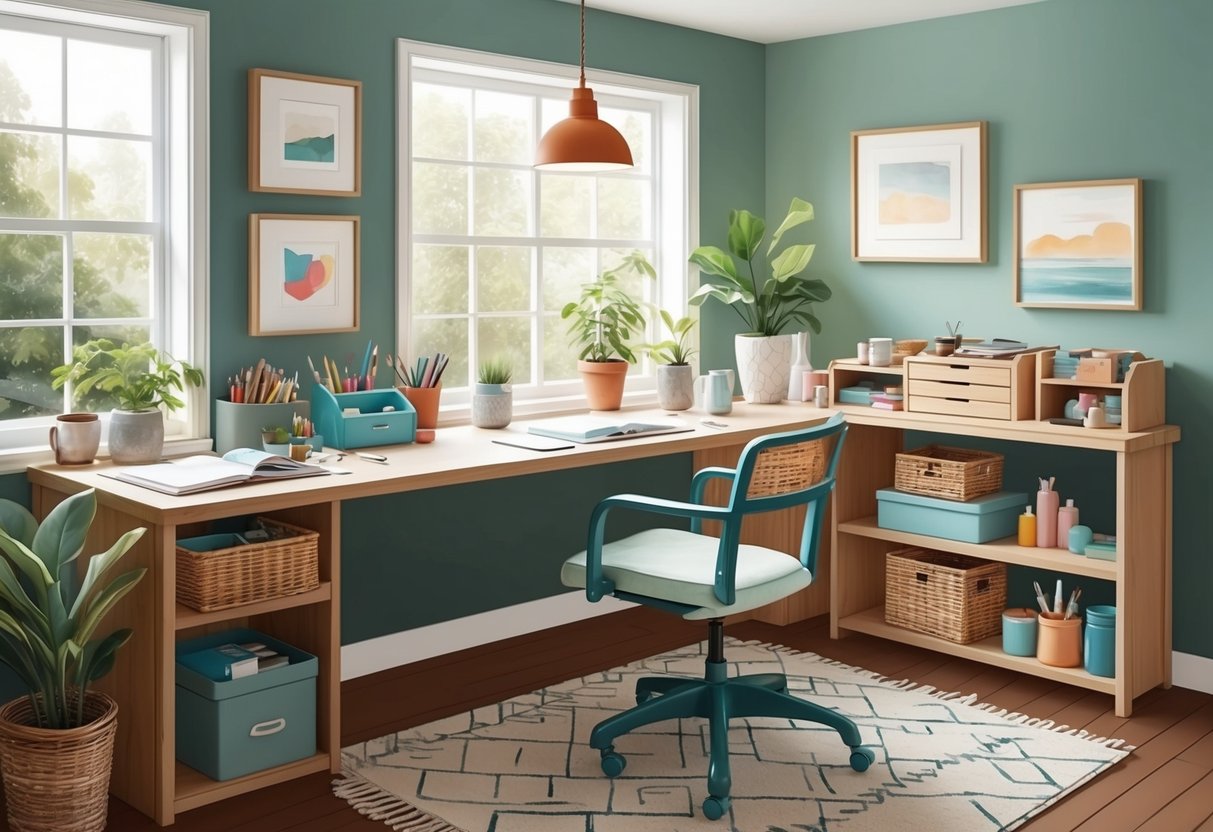
Physical Movement and Creativity
Physical activity actively supports creative thinking and improves focus. It also helps to reduce stress and promote a calm, mindful mindset that is ideal for inspired crafting.
Incorporating Exercise into Your Routine
Regular physical movement like walking, stretching, or gentle yoga increases blood flow to the brain and has been shown to enhance creative problem-solving. For many, starting the day with a structured exercise routine—such as a brisk walk or a short workout—sets a positive tone and clears away mental fog.
Evidence shows that those who maintain an active lifestyle often experience improved cognitive flexibility and better idea generation. Even low-impact activities can make a difference when done consistently.
Schedule activities during periods when you are typically at your lowest energy or focus, such as mid-afternoon, to revive both mindfulness and productivity. Those who build habits around exercise often report improved mood, better motivation, and higher creative output.
Physical movement can also serve as a natural buffer for stress, making it easier to return to creative tasks with renewed engagement and fresh perspective. Studies have shown that simple activities like walking can stimulate creativity and enhance problem-solving abilities, as highlighted in research featured by Stanford University and summarized in this article about the power of walking and creativity.
Movement-Based Creative Breaks
Short, intentional movement breaks are valuable tools for overcoming creative blocks and maintaining focus during longer crafting sessions. Stepping away from your project for a few minutes to stretch, pace, or even perform simple breathing exercises can help reset your mind.
During these breaks, pay attention to breathing and posture to foster mindfulness and a sense of calm. Gentle movements done with intention can ease muscle tension and prevent mental fatigue.
For many people, these brief activities spark unexpected connections, leading to new ideas. Consider using a timer to remind yourself to pause every hour.
Even just five minutes of movement can reinvigorate both body and mind, allowing you to return to your craft with greater creativity and motivation. A short walk or light stretching session can boost creative energy and productivity significantly.
This proactive approach to self-care helps set the stage for sustained, inspired crafting.
Infusing Art and Innovation into Everyday Life
Cooking, photography, and painting can be powerful outlets for nurturing creativity. Integrating artistic practices into daily routines lets people turn ordinary moments into opportunities for innovation and personal growth.
Creative Cooking and Food Crafts
Experimenting with new recipes and presentation techniques transforms routine cooking into an inspiring creative practice. This includes arranging fruits into vibrant patterns, using edible flowers for decoration, or crafting themed bento boxes.
Adding color, texture, and shape variation to meals helps stimulate both visual and taste senses. Planning weekly challenges, such as incorporating an unusual ingredient or attempting a world cuisine, encourages experimentation.
Keeping a food journal or photo album to document results can track progress and inspiration. For families, involving children in the process boosts engagement, offering a chance to explore textures and flavors together.
Using techniques like food carving, homemade pasta making, and cake decorating channels artistic impulses. Beyond taste, these activities foster mindfulness and a sense of accomplishment, making even simple meals more enjoyable and memorable.
More on creative food practices can be found in habits for creative living.
Capturing Inspiration with Photos
Embracing photography encourages people to observe the world more attentively. Carrying a smartphone or camera and taking quick snapshots of interesting scenes, textures, or everyday details builds a valuable visual archive.
Setting small daily or weekly photo challenges—photographing sunlight, certain colors, or unique objects—helps sharpen artistic observation skills. These activities help develop an eye for composition, lighting, and pattern.
Using photo editing apps to adjust tone, crop, or highlight details guides users in discovering their visual preferences. By curating photo collections or sharing them on digital platforms, they can reflect on their evolving perspective and gather feedback.
More about this approach is explored in creativity in everyday life.
Incorporating Painting and Visual Arts
Setting aside time for painting, sketching, or collage provides a hands-on path to self-expression. These visual arts activities need not require special training—simple materials like watercolors, colored pencils, or even digital drawing apps are enough to start.
Designating a regular art session, such as weekend afternoons or brief weekday breaks, builds consistency. Experimenting with techniques like abstract painting, nature sketching, or mixed media keeps the process stimulating.
Creating art based on daily experiences or emotions helps people connect more deeply with their own thoughts and environment. Joining community classes or online workshops inspires innovative ideas and nurtures skill growth.
Documenting progress in art journals can reinforce motivation and spark new projects. Exploring ways to easily infuse art into routine can be found in practical guides to creative living.



